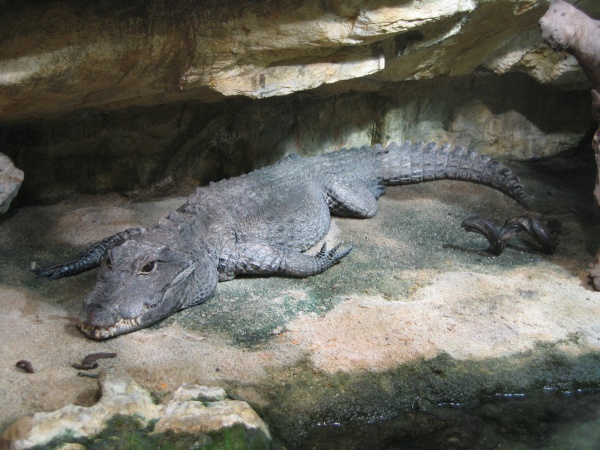Facts About Dwarf crocodile
The dwarf crocodile, also known as the African dwarf crocodile, broad-snouted crocodile, or bony crocodile, holds the distinction of being the smallest extant crocodile species. Scientists have identified three genetically distinct populations, prompting discussions about possibly classifying them as separate species. Presently, this species belongs to the monotypic genus Osteolaemus and has two recognized subspecies: O. t. tetraspis and O. t. osborni. Some studies even suggest the existence of three distinct species within the Osteolaemus genus.
The name "Osteolaemus" translates to "bony throat" while "tetraspis" means "four shields" and "osborni" honors the American paleontologist Henry Fairfield Osborn. Dwarf crocodiles typically grow to about 1.5 meters in length and are known for their heavily armored bodies, small stature, and distinctive coloration. These reptiles are native to the tropical regions of Sub-Saharan West Africa and Central Africa, where they inhabit streams, rivers, swamps, and pools.
Primarily nocturnal, dwarf crocodiles have a diverse diet, feeding on a variety of small animals. They are solitary by nature and construct nest mounds during the breeding season. Unfortunately, the IUCN lists them as vulnerable, and they are also included in Appendix I of CITES due to habitat loss and hunting for bushmeat. Conservation efforts are challenging because there is limited research on their populations and behavior.
While some dwarf crocodiles are kept and bred in zoos, captive breeding programs are not widespread, partly because their skins are not of high commercial value. Although they face significant threats in certain areas, they continue to survive in protected reserves.

 Chad
Chad